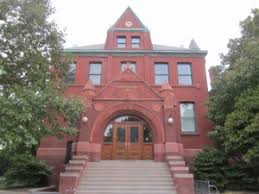Architecture Program
Date of this Version
Spring 3-12-2011
Abstract
In today’s computer savvy world it is no longer interesting to discuss digital tools purely as means in themselves. The growth of abstract exponential systems or the generation of modulated patterns for their own sake simply strain justification in light of real-world concerns such as climate change, decaying cities, and economic crises. However, the impact of explicit logic and computational thinking on design and design process remains substantial. So we continue to pursue evolving digital techniques in hope that they prompt innovative design strategies and creative organizational, effectual, or material innovations that align with the evolving technologies which shape contemporary life. But exactly how are these tools to be explored and utilized within the post-technique milieu?
The theme of ACADIA’s first regional conference, Parametricism: (SPC) strategically positions Patrik Schumacher’s Parametricism alongside the NAAB’s Student Performance Criteria (SPC). While Schumacher’s stylistic pursuit of Parametricism is often criticized, it remains the foremost proponent for defining the impacts and potentials of associative modeling. In contrast, the SPC offer a performance-oriented list of achievement criteria not engaged with particular design methodologies or generative techniques. Arguably, however, the SPC contain design implications laden with practical considerations which are capable of derailing generative design approaches. These approaches often require a type of systemic delay1 which temporary suspend pragmatic variables in favor of further design explorations within the iterative processes of computational techniques. Does compliance with the SPC signal the end of generative design for the sake of a more practical agenda, or can the rather odd pairing of the two terms suggest a new focus for digital design tools in the ACADIA community?
Document is 315 pp; 160 Mb
Contents:
Introductions
Foreword — Nancy Yen-wen Cheng
Acknowledgements — Tim Hemsath
Introduction, Parametricism (SPC) — Steve(n) Hardy
Analog Parametrics
Parametric: Making — Troy M. Malmstrom
Digital Origami: Modeling Planar Folding Structures — Dave Lee, Brian Leounis
Algorithmic Modeling: Teaching Architecture in Digital Age — Nathan Howe
Thinking in Parametric Phenomenology — Paola Sanguinetti, Chad Kraus
Building Envelopes & Surface Geometry
Repurposed Political Ply — Jason Griffiths
Weaving Methods in Architectural Design — Qing Xing, Gabriel Esquivel, Ryan Collier, Michael Tomaso, Ergun Akleman
Organized Crime: The Role of Ornament in Contemporary Architecture — Kyle Miller
Electropolymeric Technology for Dynamic Building Envelopes — Elizabeth Krietemeyer , Anna Dyson
Investigations in Digital Curricula
A Swell Project: Between Parametrics and Fabrication — Gabriel Esquivel, Ryan Collier
A Curriculum for Integrating Computational Thinking — Nicholas Senske
Parameters of a Digital Design Foundation — Erin Carraher
Parametric Thinking — Brian M. Kelly, David Karle
Digital Haptic – Learning from K-Zell — Jason Griffiths
Forms that Matter
Meta-Zoning Logistics — Dave Lee
Inform Form Perform — Nate Holland
The Hangzhou Tennis Center: A Case Study in Integrated Parametric Design — Nathan Miller
Simulations: Quantitative and Qualitative
Beyond Quantitative Simulations: Local Control Strategy Using Architectural Comonents — Taro Narahara
Perforating Material Performance: Ceiling Cloud — Andrew Vrana and Joe Meppelink
Simulation by Design: A Parametric Design Tool for Zero Energy Buildings — Troy Peters
Race track modeler. Developing an Iterative Design Workflow Combining a Game Engine and Parametric Design — Roly Hudson, Drew MacDonald, Mark Humphreys
Form-making Without Form Making — Andrzej Zaraycki
Architectural Drawing- A Prospective Requiem — David R. Scheer
Comprehensive (Parametric) Design I
Parametric Affordances: What? When? How? — Carlos Barrios
Interior Climate Optimization by Volumetric Adjustment — Daniel Hillukka
Parametric Form-Based Codes: Incorporation of land-use regulations into Building Information Models — Jong Bum Kim, Mark J. Clayton, Wei Yan
Comprehensive (Parametric) Design II
Parametric Modeling of Informal Settlements — Duygu Yenerim, Mark J. Clayton, Glen Mills
Modeling Building Information in a Parametric Environment — Kene Meniru
Parametric Modeling and BIM: Innovative Design Education for Integrated Building Practices — James Haliburton, Mark J. Clayton, Ozan Ozener, Francisco Farias, Woo Seong Jeong
Reconfiguring Collaboration by Computational Means
Tex-Fab: A new model for collaborative engagement — Brad Bel,Kevin McClellan, Andrew Vrana
Parametric Translations — Seung Ra
Parametric Variation Revealing Architectural Untranslatability — Mike Christenson
Humanizing Parametricism — Devan Castellano
Conference Information
Photos: Paper Sessions, Workshops, Receptions, Keynotes, Awards
Author Biographies
Conference Chair Biographies
Author Index
Sponsors


Comments
Full paper proceedings of Association for Computer Aided Design in Architecture conference held March 10th, 11th, and 12th, 2011, at University of Nebraska-Lincoln College of Architecture.
ISBN 978-0-615-47969-9
Copyright © 2011 Association for Computer Aided Design in Architecture.